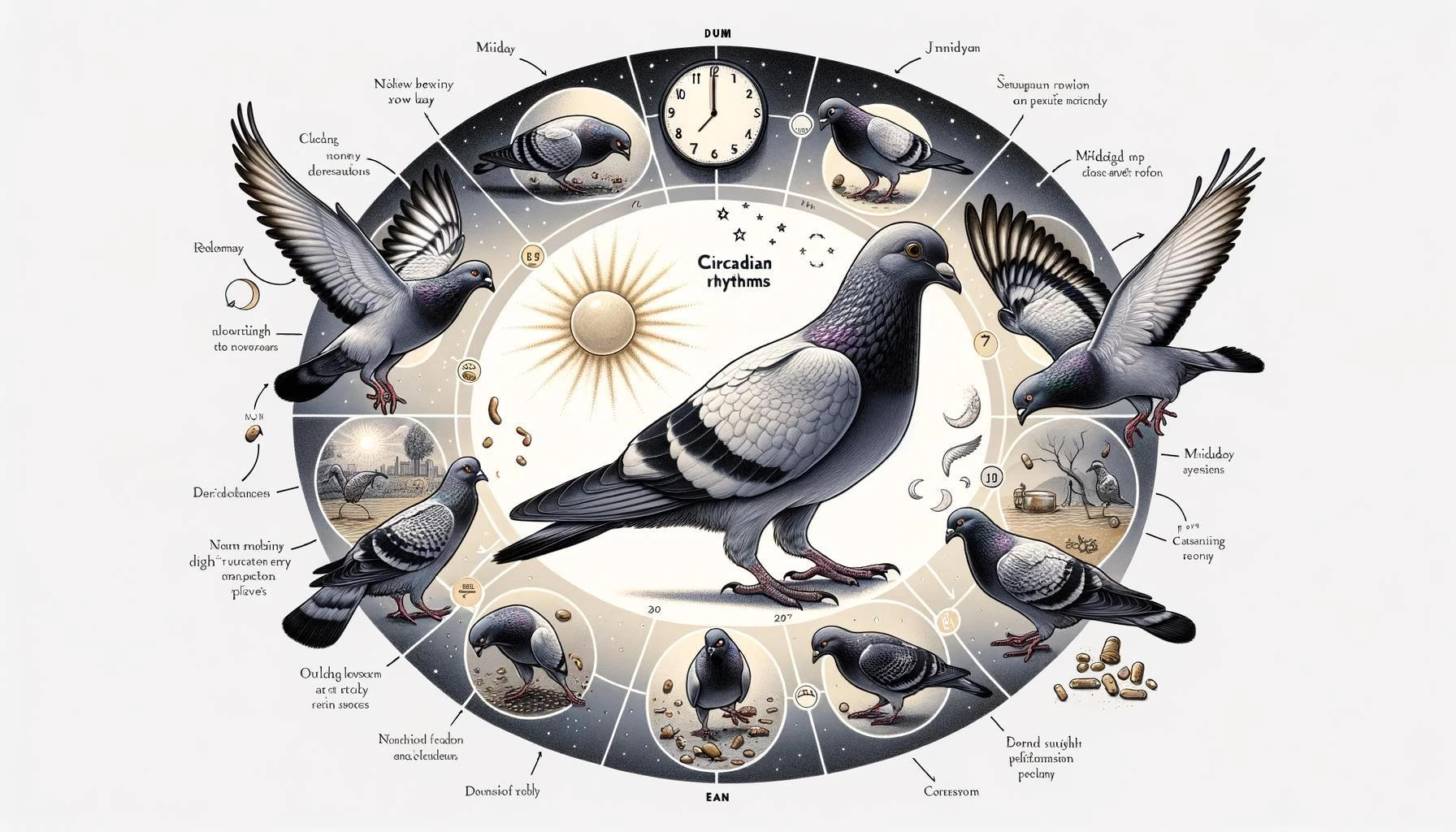Pigeons, like many other organisms, exhibit circadian rhythms. Circadian rhythms are natural oscillations that repeat roughly every 24 hours. These rhythms are regulated by a circadian clock, which helps organisms adjust their physiological and behavioral activities to the 24-hour cyclic changes in the environment. In the case of pigeons, their circadian rhythm is influenced by the Earth’s rotation and the changes in light and darkness.
Key Takeaways
- Pigeons exhibit circadian rhythms, which are natural oscillations that repeat roughly every 24 hours.
- Circadian rhythms in pigeons are regulated by a circadian clock that responds to changes in light and darkness.
- The circadian rhythm of pigeons influences their physiological and behavioral activities, including feeding patterns and locomotor activity.
The Role of Circadian Rhythm in Pigeons
The circadian rhythm of pigeons plays a significant role in regulating their daily activities. Just like humans and many other animals, pigeons have an internal clock known as the circadian clock that helps them synchronize their physiology and behavior with the Earth’s rotation and the cycles of light and darkness in their environment. This circadian clock is located in the brain and is responsible for regulating the pigeon’s sleep/wake cycle, feeding patterns, and locomotor activity.
Pigeons are diurnal animals, meaning they are active during the day and sleep at night. The circadian rhythm of pigeons allows them to be most alert and active during the daylight hours when they have better visibility and access to food sources. As the evening approaches and darkness sets in, their circadian clock triggers the release of the hormone melatonin, which promotes sleepiness and prepares them for rest.
Studies have shown that the circadian rhythm of pigeons can be entrained or synchronized by environmental cues, primarily changes in light. Birds, including pigeons, have specialized photoreceptor cells in their eyes that are sensitive to light. When exposed to light, these photoreceptors send signals to the circadian clock, helping adjust the pigeon’s internal clock according to the natural light-dark cycle.
Feeding Rhythms in Pigeons
One of the significant ways the circadian rhythm influences pigeons is through their feeding patterns. Pigeons have feeding rhythms that are synchronized with their circadian clock and the availability of food sources. Their circadian clock helps regulate when they are most hungry and active for foraging.
Studies have shown that when pigeons have their circadian rhythm disrupted—for example, by being exposed to constant light—they can experience disturbances in their feeding patterns. Pigeons in constant light conditions may show altered or irregular feeding behavior, such as increased or decreased food intake, mistimed meals, or reduced appetite.
On the other hand, when pigeons are exposed to a natural light-dark cycle, their circadian rhythm helps synchronize their feeding activity with the daylight hours when food sources are more readily available. Pigeons tend to forage and eat more during the daytime and reduce their feeding activity during the night when they sleep.
Impact of Circadian Rhythm on Locomotor Activity
The circadian rhythm also influences the locomotor activity of pigeons. Pigeons have been observed to exhibit increased activity levels during the day when they are most alert and actively engaged in foraging, social interactions, and territorial behaviors.
The circadian clock helps regulate the timing and intensity of their locomotor activity. When exposed to natural light-dark cycles, pigeons are more active and engaged in their surroundings during the daylight hours. As darkness sets in and their circadian clock signals the onset of nighttime, their locomotor activity decreases, and they become less active, preparing for sleep.
Disruptions to the circadian rhythm, such as constant light exposure or changes in the natural light-dark cycle, can lead to alterations in the pigeons’ locomotor activity. Pigeons in constant light conditions may exhibit irregular or fragmented activity patterns, insomnia, or reduced activity levels.
In Conclusion
Circadian rhythm is an essential aspect of pigeons’ biology, regulating their sleep/wake cycle, feeding patterns, and locomotor activity. Their circadian clock helps them synchronize their behaviors with the natural light-dark cycle and adapt to the daily cyclic changes in their environment.
Understanding the circadian rhythm of pigeons can provide valuable insights into their natural behaviors, as well as help in the development of appropriate care and management strategies for captive pigeons.








